1. Roswell, New Mexico
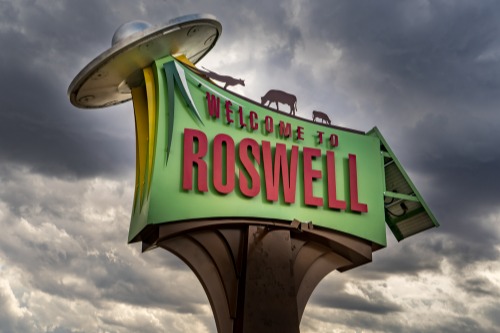
Roswell has become synonymous with aliens and UFOs thanks to the infamous 1947 incident. The official story claimed a weather balloon crashed, but conspiracy theories about extraterrestrials quickly took over. The twist? It actually was a cover-up—but not for aliens. It was a top-secret military surveillance balloon from Project Mogul designed to detect Soviet nuclear tests, according to William J. Broad from The New York Times.
Still, Roswell fully embraced the alien angle, building museums, hosting festivals, and turning itself into America’s UFO capital. It’s a town profiting off a government lie—but not the one people think. The irony is that it was a cover-up, just not the little green men kind. Tourists show up for the aliens, and the town is happy to play along.
2. Plymouth Rock, Massachusetts
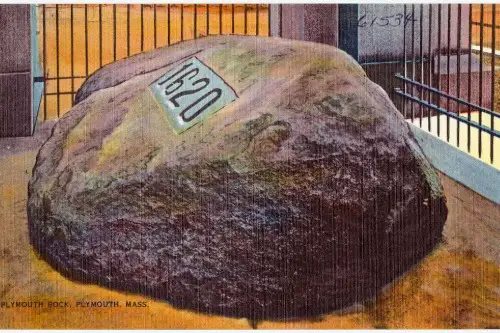
You’ve probably heard the story: the Pilgrims landed at Plymouth Rock in 1620, stepped off the Mayflower, and history began. The problem? There’s zero evidence that they actually landed on that specific rock, according to Josh Kelety from AP News. The story didn’t even pop up until more than 120 years later, and even then, it was based on a secondhand account from someone born after the event.
Despite its questionable authenticity, Plymouth Rock became a symbol of American origins. The actual rock has been chipped away over time, relocated, and rebranded into something far grander than it likely ever was. Still, tourists flock there expecting to see the cradle of the nation’s founding moment. It’s an icon built more on national myth than verified history.
3. The Alamo, Texas
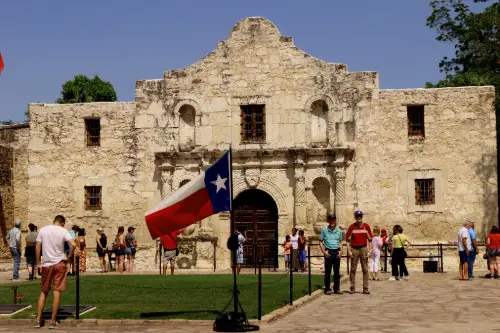
“Remember the Alamo” might be one of the most famous slogans in American history, but the story behind it is murkier than the movies let on. The popular narrative paints it as a fight for freedom and liberty, but the Texas Revolution had strong ties to slavery and land control. Many of the Texan fighters were actually rebelling against Mexico’s ban on slavery. So the romanticized idea of brave defenders standing for independence leaves out some key context, according to Bryan Burrough and Jason Stanford from TIME Magazine.
The building itself is real, but what it symbolizes has been scrubbed clean of the complicated history. The shrine-like atmosphere around it makes it easy to forget that not all heroes in this story were fighting for noble ideals. Tourists visit expecting patriotism, but they’re stepping into a narrative that has been strategically whitewashed. The truth is way more complicated—and a lot more uncomfortable.
4. Salem, Massachusetts
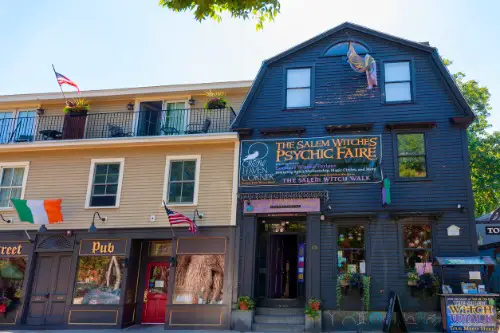
Salem has turned its witch trial history into a full-blown tourism industry, complete with museums, haunted tours, and black hat merch galore. But most of the places tourists visit today aren’t where the actual trials or executions happened. The real gallows site wasn’t even officially identified until 2016. A lot of what’s marketed as “historic Salem” is actually fictionalized or misrepresented for spooky appeal, according to Jess Blumberg from Smithsonian Magazine.
That doesn’t stop millions of people from visiting every year thinking they’re walking in the footsteps of accused witches. The city’s economy has leaned hard into the occult, often ignoring the fact that this was a tragic story about fear, injustice, and mass hysteria. It’s ironic that a place built on punishing falsehoods now thrives on them. In the end, it’s more about vibes than verified history.
5. Paul Bunyan Statues, Multiple States

You’ve probably seen those giant statues of Paul Bunyan and his blue ox Babe scattered across states like Minnesota, Michigan, and California. He’s marketed as a real folk hero, a massive lumberjack who shaped the American wilderness. But Paul Bunyan was never a real person—he was a marketing creation amplified by logging companies and embellished over time.
The earliest known written stories about him appeared in an ad campaign for the Red River Lumber Company. Before that, the character existed only in vague oral traditions, not as a unified figure. Still, towns across the U.S. claim to be his “birthplace,” each with their own statue. He’s a tourist magnet created out of thin air—literally tall tales made larger than life.
6. Jamestown Settlement, Virginia

Jamestown is often celebrated as the first permanent English colony in America, but what you see there today is more reenactment than reality. The actual original site is separate from the Jamestown Settlement tourist attraction, which was built nearby and designed more for experience than authenticity. Many of the structures are reconstructions, not preserved originals.
And while Pocahontas and John Smith are often central figures in the tour, their real relationship was far more limited than Disney would have you believe. The story has been highly romanticized and whitewashed to fit a more palatable narrative. The attraction sells a version of colonial history that downplays the brutality, disease, and tension with Indigenous peoples. So what’s being sold is more fiction than fact.
7. Tombstone, Arizona

Tombstone markets itself as the wildest town in the Old West, with daily reenactments of the famous shootout at the O.K. Corral. But the real gunfight didn’t actually happen at the corral—it took place on Fremont Street, about a block away. The name was just more dramatic and easier to remember. And the whole “lawmen versus outlaws” angle? Not so clear-cut.
The conflict was deeply political, with both sides operating in legal and moral gray areas. But the town has built its entire identity on the myth of noble sheriffs and dastardly cowboys. Today, it’s more theme park than historic site, filled with staged gunfights and saloon shows. The Old West here is more Hollywood than history.
8. Mount Rushmore, South Dakota
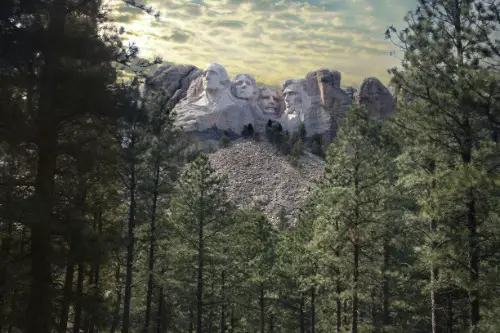
Mount Rushmore is seen as a monument to American greatness, with four iconic presidents carved into the Black Hills. What’s often left out is that the land was taken from the Lakota Sioux, who consider it sacred. The U.S. government promised the land to them in the Treaty of Fort Laramie in 1868—then seized it after gold was discovered. So the monument was literally built on broken promises.
To make matters worse, the sculptor Gutzon Borglum had ties to the Ku Klux Klan and white supremacist groups. That’s a pretty big detail left out of the brochures. While the carvings are undeniably impressive, they represent a sanitized version of history that ignores how the land was acquired. It’s a national symbol that masks a painful legacy.
9. Liberty Bell, Pennsylvania
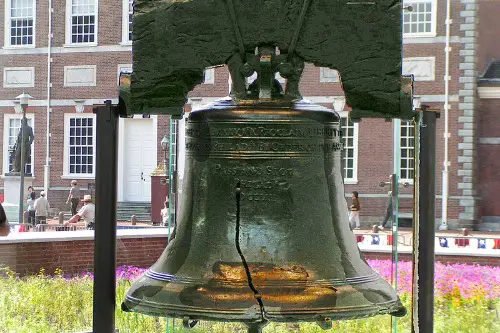
The Liberty Bell is often touted as a symbol of freedom and independence, but it didn’t actually ring on July 4, 1776. There’s no evidence it rang to celebrate the signing of the Declaration of Independence. In fact, the bell likely didn’t ring at all that day—it was probably too fragile, already having cracked years before.
Much of the legend surrounding it was popularized in the 19th century by a short story called Ring, Grandfather, Ring, which imagined the bell ringing out on Independence Day. That tale helped fuel its mythic status, and it stuck. Today, the bell is one of the most visited symbols of liberty, even though its origin story is largely fabricated. It’s more a product of storytelling than historical fact.
10. The Hollywood Sign, California

The Hollywood Sign is one of the most recognizable symbols of fame and glamour, but its origins are way less glamorous. It originally said “Hollywoodland” and was actually an advertisement for a real estate development in the 1920s. It had nothing to do with movies or stars—it was just a marketing ploy to sell houses in the Hollywood Hills.
Over time, the film industry grew nearby and the sign became linked with showbiz purely by proximity. The “land” part was removed in 1949, and the rest is history—or at least great branding. Tourists think it represents the heart of cinema, but it was born out of a housing pitch. Hollywood’s biggest symbol is, fittingly, a bit of fiction.
11. St. Augustine, Florida

St. Augustine is billed as the oldest city in the U.S., founded in 1565 by Spanish explorers. While that’s technically true, much of what tourists see today isn’t original at all. The “historic” buildings are mostly 20th-century reconstructions, built to look old rather than preserve genuine colonial architecture. In the 1960s, a massive restoration project aimed to turn the city into a kind of Spanish Colonial Williamsburg.
The project was driven more by tourism dollars than historical accuracy. Some buildings were demolished and rebuilt based on vague sketches or assumptions. While it still holds genuine historical significance, much of what people visit is an idealized version of what might have been. It’s more theatrical set than preserved past.
12. Las Vegas, Nevada
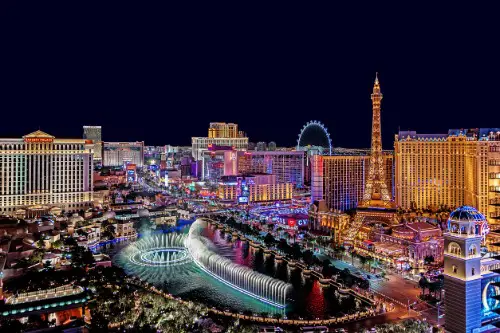
Las Vegas was sold to the public as a glitzy escape, a place built on dreams, jackpots, and indulgence. But the city’s rise was heavily tied to organized crime, shady land deals, and mob money. Much of the early development of The Strip was bankrolled by mafia figures like Bugsy Siegel. The idea of Las Vegas as a legitimate resort town was largely a cover story.
As tourism grew, the city rebranded itself, scrubbing the mob connections and turning them into novelty history. Today, mob museums and flashy casino tours lean into the gangster past with a wink, even though it was deadly serious at the time. The Vegas you see today was built on a mountain of illusions—financial, legal, and historical. What happens in Vegas started with a lie.
13. The Lost Colony of Roanoke, North Carolina
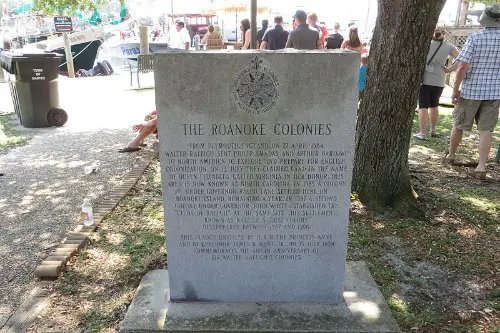
Roanoke Island is a popular historical site, drawing tourists curious about the mysterious disappearance of the English settlers in the late 1500s. But much of what’s presented as fact is pure speculation. No one knows what actually happened to the colony—whether they assimilated with local tribes, died off, or fled elsewhere. The famous “CROATOAN” carving is the only clue, and even that’s up for debate.
Still, the site has been turned into a destination complete with dramatizations and interactive exhibits. The mystery is part of the draw, but the historical certainty is nonexistent. Roanoke sells itself on one of the great unsolved disappearances in American history, but visitors aren’t seeing a site of clear answers—they’re walking into a carefully curated enigma. The truth? It’s anyone’s guess.
14. Centralia, Pennsylvania
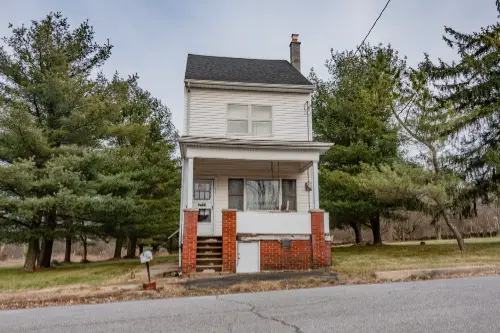
Centralia draws thrill-seekers and curiosity tourists who want to see a “ghost town” abandoned due to an underground mine fire. That part is true—the fire started in 1962 and still burns today—but the town’s eerie, apocalyptic image has been exaggerated. For years, people still lived there, and parts of the town weren’t nearly as abandoned as photos made them seem. The popular image of empty streets covered in graffiti and smoke is real in places, but not the whole story.
Many of the viral photos were staged or taken at specific angles to emphasize the desolation. The idea that Centralia was immediately swallowed by fire isn’t accurate—it was a slow, bureaucratic unraveling over decades. And while it did inspire the video game Silent Hill, the horror-movie feel of the place owes more to the internet than the actual location. It’s a destination that’s become legend, not just location.
15. Fort Sumter, South Carolina
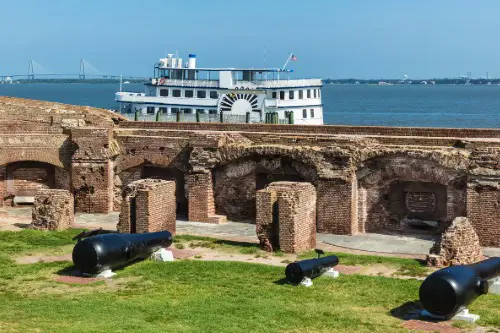
Fort Sumter is often visited as the site where the Civil War officially began, and while that’s true, what people see today isn’t the original fort. Most of the structure was destroyed during the war, and what remains is heavily reconstructed. The picturesque brick walls tourists stroll by weren’t there in 1861. The fort was essentially rebuilt decades later as a memorial.
Yet the narrative often glosses over that fact, presenting it as an untouched site of historical significance. It’s a classic example of “restoration” being sold as “preservation.” Fort Sumter is still important, but what you’re seeing is more tribute than relic. It’s a piece of history rebuilt to tell a story—not necessarily to show the truth.


